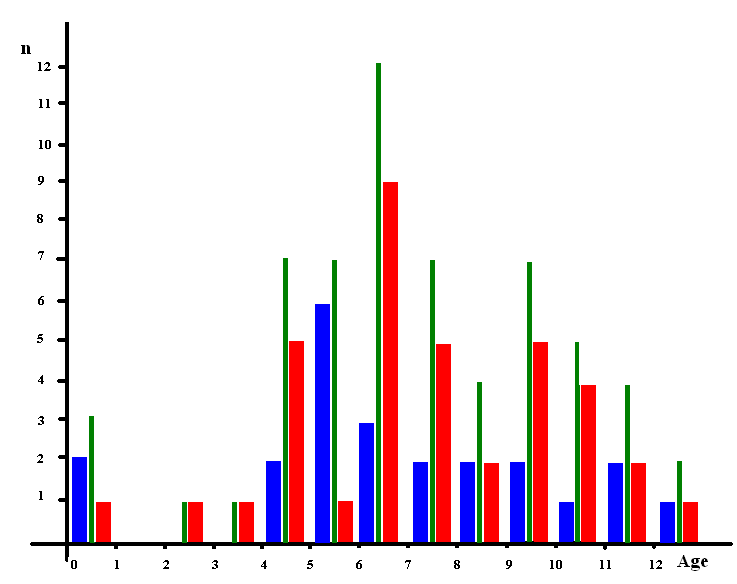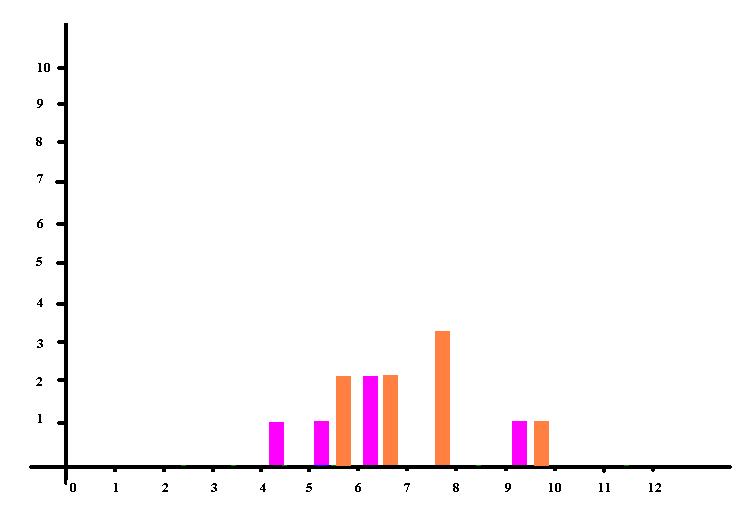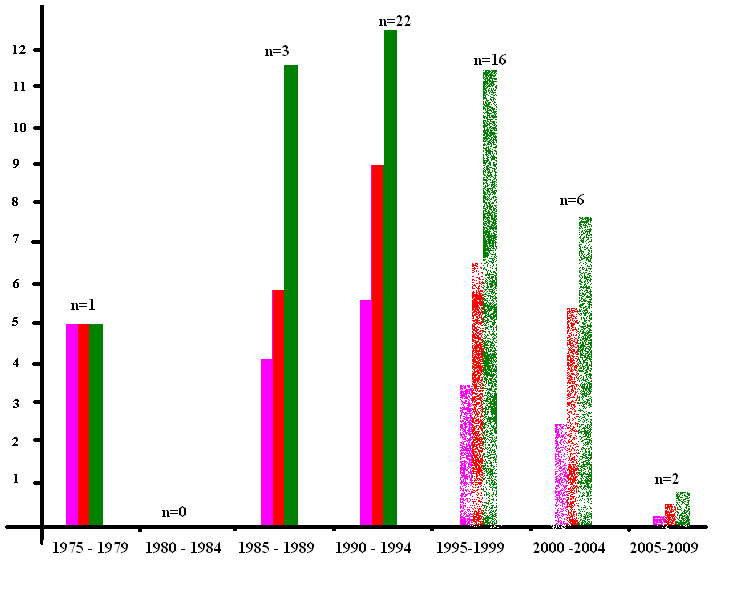Statistics on lifetime of Irish Wolfhounds.
It is common assumed tha tlarger dogs live a shorter life than the smaller dogs. And tha tIrish wolfhounds normally do not get very old.
But how long does an irish wolfhound live? I wanted to find an anser to this, now having one myself. And I did not want a statistic made by a breeders organisation..
I read several Rainbow Brides on the internet, in order to find lifetime information on Irish Wolfhounds. I have only used European breed dogs, as there might be differences from continent to continent. There are differences enough in Europe already.
Data from a total of 60 wolfhounds were collected.
Sources:
Irish Wolfhound Point
Irish Wolfhound Club of Belgium
Irish Wolfhound International Forum
Rainbow Bridges are not necessarily representative, They have only existed in 1-1½ decade, and only very few dogs before the days of the net were recorded.
I counted males and females seperately.
Somewhat surprising the average lifetime turned out so:
Males: 6,8 years n=23 (23 hounds)
Females: 7,2 years n=37
Total: 7,1 yearsår n=60
Oldest male got 12½ years old.
Oldest female got 12 years old.
The share of lifetimes was like this:

Horiszontal: Life ager.
Vertical: Number of hounds that died at this age.
Reading thisarticle from Wolfhouse
My data are not far from other similiar statistics, the difference may lay therein that my data are based on German and dutch/belgian data, wehre hearth checkups have been normal procedure for some time already.
Notice the remarkable difference between IW (6,2) and Great Dane (4,6) in that article!
Only in the fewest cases the reason of death was informed, DCM and cancer were the most common, beside some other reaons that were only present in single cases and have not been counted.

Orange = Cancer
Mauve = DCM
n=13 (13 hounds)
Horizontal: The age in which the hound died from this illness.
Vertical: Number of dogs.
Dogs with DCM had an average lifetime of 7 years (6,95) n=4
Dogs with bone cancer had an average lifetime of 7 years (6,98) n=8
Notice that these values are not far from the general lifetime. Reasons may be too few data, and that numeral of the hounds in the first study died of these reasons, without having it mentioned.
In order to study how the lifetime develops, I sorted the birthyears in goups of halfdecades, like 1. January 1990 - 31. December 1994 etc.
IN some cases the year of birth was not mentioned, or could not be calculated. Furthermore registrations of dogs born before 1990 in the rainbow bridges are rare. Also studies of the group born between 1995-1999 is not possible because some hounds born in this timeframe are sitll alive, thus the columns have been made transparent...

Horizontal: Year of birth
Vertical: Life age.
Mauve: Lowest appearing lifeage
Red: Average.
Green: Highest appearing lifeage.
n= .... number of hounds.
The very high average of 9 years in the born-in 1990-1994 frame mau be caused by the appearence of a number of hounds tat got very old, and that the hound with the shortest life after all did get 5½ year old.
Of course a better study will require more data. The values before 1990 are based on only 4 hounds, and thus unreliable.
It is my hope that you may find this useful.
Further data is always welcome.
© Copyright 2008 Kim Christensen